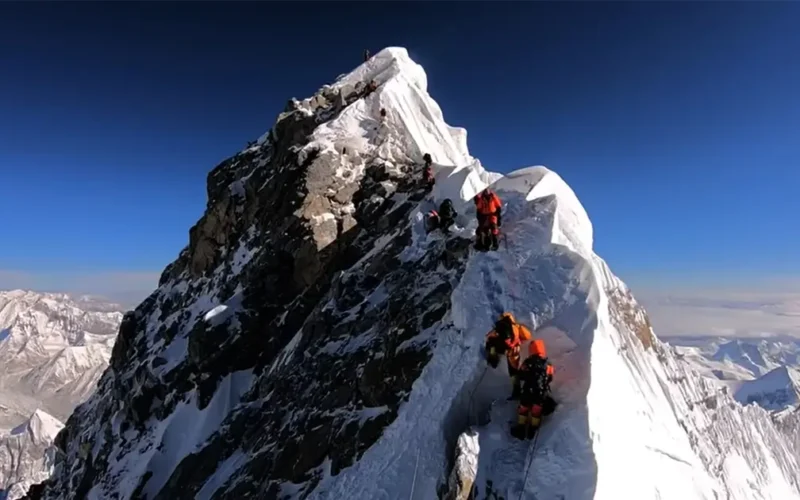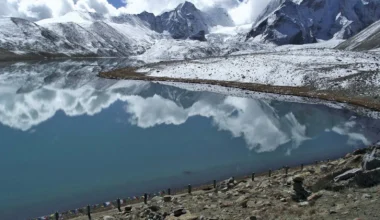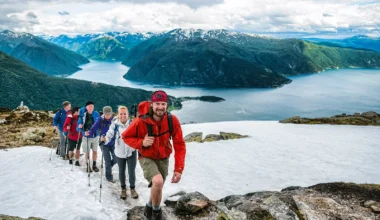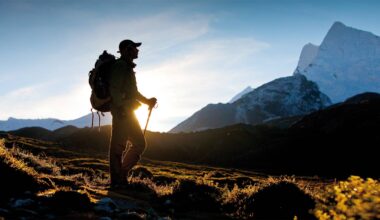Climbing Mount Everest is the dream of countless adventure travelers, trekkers, and mountaineering enthusiasts. But how long does it actually take to reach the world’s highest peak? The journey is not just about reaching the summit; it requires careful planning, acclimatization, and endurance. In this guide, we’ll break down how long to climb Everest, the costs, essential tips, and everything you need to know to conquer this formidable mountain safely.
Understanding the Everest Expedition Timeline
The climb to Everest’s summit is not a single-day challenge. Here’s a breakdown of the typical expedition timeline:
Trekking to Base Camp
The trek to Everest Base Camp (EBC) usually takes 7–12 days, covering approximately 130 km from Lukla. This phase is crucial to begin acclimatization and prepare the body for higher altitudes.
Acclimatization Rotations
Acclimatization is essential to prevent altitude sickness. Climbers spend 4–6 weeks moving between higher and lower camps, allowing their bodies to adjust gradually to the extreme elevation.
Summit Push
The final ascent and descent usually take 4–6 days, depending on weather, physical condition, and team coordination. Timing is crucial to ensure a safe return before nightfall.
Total Duration
Overall, a full Everest expedition lasts between 6 to 10 weeks, including trekking, acclimatization, and the summit attempt. Proper pacing is key for safety and success.
Why Does It Cost $40,000 to Climb Mount Everest?
Climbing Everest is an expensive adventure, with costs often exceeding $40,000. Here’s why:
- Permit Fees: The Nepalese government charges significant fees for climbing permits.
- Guides and Sherpas: Experienced guides and Sherpas ensure safety and support during the climb.
- Equipment and Supplies: High-quality gear, oxygen tanks, and technical climbing equipment are mandatory.
- Logistics and Insurance: Transport, insurance, and emergency evacuation plans contribute to the cost.
- Training and Personal Expenses: Preparatory training, travel, and other personal costs add up.
Investing in proper preparation ensures both safety and success during your Everest expedition.
Acclimatization: The Key to Safe Ascent
High-altitude climbing demands careful acclimatization. Key points include:
- Understanding Altitude Sickness: Symptoms such as headaches, nausea, and dizziness are common at high elevations.
- Acclimatization Strategies: “Climb high, sleep low,” rest days, and staying hydrated help the body adjust.
- Importance of Slow Ascent: Gradual increases in altitude reduce the risk of serious complications.
Proper acclimatization can be the difference between reaching the summit safely and facing life-threatening situations.
The 2 PM Rule: A Crucial Mountaineering Strategy
One critical strategy climbers follow is the 2 PM rule:
- Definition: Turn back by 2 PM during summit attempts.
- Purpose: Ensures climbers descend safely before darkness and harsh weather set in.
- Implementation: Strict adherence to time schedules can prevent accidents and save lives.
This rule is a simple yet vital guideline for high-altitude safety.
Fastest and Most Extreme Ascent Times
While most climbers take weeks to reach the summit, some have achieved rapid ascents:
- Record Holders: A few climbers have summited Everest in under a week using supplemental oxygen and extreme training.
- Methods Used: Hypoxic training and continuous acclimatization rotations enable faster climbs.
- Controversies: Such extreme ascents are debated due to safety risks and ethical concerns.
Understanding these extremes gives context to the normal expedition timeline and expectations.
Essential Gear for Mount Everest Climbers
Preparation is key. Essential gear includes:
- Clothing: Layered systems to protect against extreme cold.
- Footwear: Insulated boots for ice and snow conditions.
- Climbing Equipment: Crampons, ice axes, ropes, and harnesses.
- Oxygen Systems: Supplemental oxygen for the “death zone” above 8,000 meters.
- Navigation Tools: GPS, maps, and compasses for safe route planning.
Investing in quality gear ensures safety and increases your chances of a successful climb.
7 Essential Tips for Aspiring Everest Climbers
- Physical Preparation: Engage in strength, endurance, and cardiovascular training.
- Mental Conditioning: Develop resilience and focus to handle extreme stress.
- Proper Nutrition: Maintain a balanced diet to fuel high-altitude performance.
- Hydration: Drink sufficient fluids to prevent dehydration and altitude sickness.
- Rest and Recovery: Prioritize sleep and recovery days to maintain energy.
- Teamwork: Work closely with guides, Sherpas, and fellow climbers.
- Respect for Nature: Follow Leave No Trace principles to protect the environment.
Following these tips improves both safety and the overall climbing experience.
Learn more about thrilling adventure experiences and essential preparation at Skydive Guides, your go-to resource for extreme sports enthusiasts.
Frequently Asked Questions (FAQ)
How long does it take to climb Mount Everest?
Most expeditions last between 6 to 10 weeks, including acclimatization and summit attempts.
What is the 2 PM rule on Mount Everest?
Climbers must turn back by 2 PM to ensure safe descent before nightfall.
Why does it cost $40,000 to climb Mount Everest?
Costs include permits, guides, equipment, logistics, and personal expenses.
How long does it take to climb down Mount Everest?
The descent typically takes 2–3 days, depending on weather and climber condition.
What is the fastest time to climb Mount Everest?
Record times vary, with some climbers achieving rapid ascents under highly controlled conditions.
Related Guides
For beginners preparing for Everest or high-altitude trekking, check out our guide:
✅ Conclusion
Climbing Mount Everest is a monumental achievement requiring 6–10 weeks, careful preparation, and proper acclimatization. By understanding the timeline, costs, essential gear, and critical strategies like the 2 PM rule, you can safely plan your expedition. Whether you’re an adventure traveler, trekker, or mountaineering enthusiast, following these tips will help you conquer the world’s highest peak with confidence.






